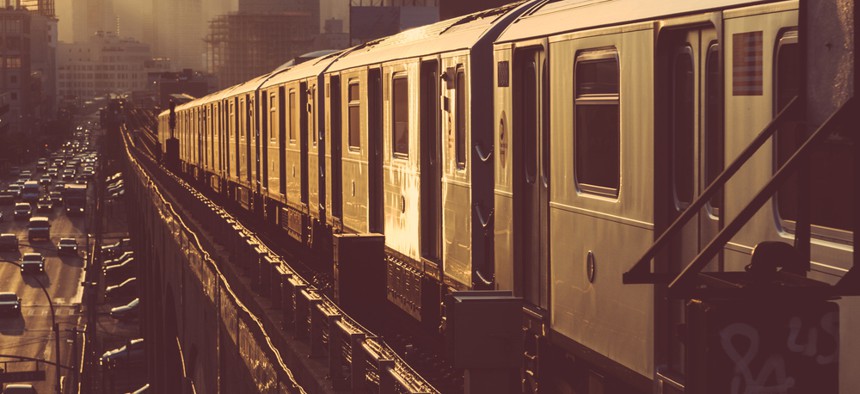New report highlights subway accessibility concerns
A recent report from New York City Comptroller Scott Stringer highlights “transit deserts."

New York City elevated subway Shutterstock
Ashley Marie Alvarez remembers the sub-zero temperatures and brutal weather that brought New York City to a standstill last winter. She remembers the difficulty of visiting and caring for her elderly mother. She also remembers how, during some stretches of that winter, she gave up.
Walking is the only option for Alvarez and her wheelchair-bound mother even though they live 30 minutes apart from each other in Queens. Typically, Alvarez takes her mother to Maspeth Town Hall, a local community center, before heading to Manhattan for her job as a veterinarian technician. But last winter the bad weather and lack of accessible subway stations sometimes made the commute too difficult.
“I felt totally helpless,” said Alvarez. “She needs the stimulation and human interaction (the center provides). I just couldn’t get her there.”
Alvarez’s mother, Maria, relies heavily on her daughter. The two cannot afford a caretaker and applying for Access-a-Ride has so far been a difficult and fruitless process. Alvarez does not have access to a car. Reluctantly, Alvarez had to forgo the community center trips for much of the winter.
“The center doesn’t provide transportation. There aren’t any accessible subway stations between us, and the buses are a nightmare.” said Alvarez. The buses are overcrowded and snowbanks left behind from the city plows made it hard for wheelchair lifts to operate, she added. She had to rely on friends to help her mom move around.
Alvarez, 34, has lived in Queens for her entire life. She was raised in Maspeth in the house where her now 86-year-old mother lives alone now that Alvarez has moved to nearby Jackson Heights.
The Maspeth Town Hall community center provides buses for summer camp trips, but Executive Director Eileen Reilly said she was unaware of transportation-related challenges.
“No one has said they cannot make it to the town hall because of the lack of transportation,” Reilly said.
But Alvarez is not alone in having her ability to move around curtailed.
A new report from New York City Comptroller Scott Stringer, entitled Service Denied: Accessibility and the New York City Subway System. The report highlights “transit deserts,” neighborhoods that are either entirely inaccessible via subway or lack a single ADA accessible station.
According to the report, only 122 of New York City's 189 neighborhoods are served by the subway. Of those 122 neighborhoods, 62 do not have a single Americans with Disabilities Act-compliant station and of those neighborhoods, 55 are located in either the Bronx, Brooklyn, or Queens. Some 26 percent of Manhattan neighborhoods do not have any ADA accessible stations. Overall, only 24 percent of the city’s 472 subway stations are ADA accessible.
There are 640,000 residents who are being deprived access to the subways because of a lack of accessibility, according to the report.
“Only in New York is the utility and reach of the subway system being systematically squandered,” reads the report.
Marysol Losada, a resident of Woodside, Queens, has endured her share of transit woes. In June of 2017, Losada, 26, slipped and fell on the stairs leading to her apartment. The result was a broken ankle that limited her mobility.
While Losada lives equidistant between the 7 and R subway lines, she was surprised to find how difficult her daily life became. She worked at a call center in Flushing, but that soon came to an end because of the challenges of moving with crutches, which doubled her normal travelling time.
There were no useful bus lines nearby and she could not afford to take daily cabs. So each day, Losada pushed herself to reach the closest 7 train station at 61st street, which is listed as accessible on the official MTA website. It has elevators but still requires travelers to climb stairs to reach the track level. But she was late every day for two weeks and was soon fired from her job, she said.
The report calls for the city to find funding for the New York City Transit Fast Forward plan. Fast Forward involves a pledge to build 50 new ADA accessible subway stations over the next five years. It recommends using an $8 billion Transit Bond Act to fund the project, noting that the last transit bond act in 2005, was approved by 56 percent of New York state voters and generated $2.9 billion.
And that money is where hopes for a more-accessible subway system not reside.
“With these dollars in place, the MTA can dramatically enhance the reach of the subway system and improve the lives of hundreds of thousands of New Yorkers,” the report states.
